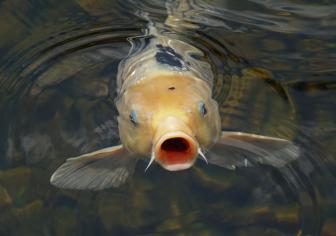ArtixScan 4000tf SilverFast Ai 6.0
Microtek And LaserSoft Offer The Latest Advances In Film Scanning
All I need do is look at my oldest archive files from 35mm scans going back over a decade to realize how much scanners and their software drivers have progressed. The first 35mm film scanner I tested cost as much as a new car, was half the resolution of today's, and was slow. The software was bare and basic with just a few crude slider controls. But for this report I will refer back not to those early days but to the original Microtek ArtixScan 4000t and LaserSoft SilverFast Ai 5.0 I have been using ever since December, 1999. That combination was highlighted by a new resolution plateau of 4000dpi, sufficient motivation for me to begin re-scanning much of my 35mm film library. Today, with this latest ArtixScan 4000tf and SilverFast 6.0, I am compelled by the improvements in scan quality to begin to re-scan many of my film images yet again. |
|||
New Microtek ArtixScan
4000tf Features |
|||
New LaserSoft SilverFast
Ai 6.0 Features |
|||
In addition to the new features, many of SilverFast's functions have been added to and refined. The performance of NegaFix has been enhanced by added and more refined "profiles" for color negative and black and white films. The Selective Color adjustment capability has been extended by the addition of multi-layers and multi-masking capabilities, supporting the individual adjustment of similar, as well as different color areas within an image. Converting or scanning color to result in gray scale is a unique new feature that makes it possible to control gray tone separations of different colors in the original. SilverFast's already powerful color cast removal has been enhanced to accommodate correction of casts resulting from mixed light or other differentiated casts within an image by being able to select up to four points that can be edited in a special dialog box. |
|||
Scanning With The ArtixScan
4000tf And SilverFast 6.0 |
|||
Dust And Scratch Removal |
|||
Color Restoration Grain And Noise Elimination |
|||
NegaFix For Color And B&W
Negs |
|||
In the past the inability of any scanner software to do a good job of interpreting silver-based black and white prompted me to write a recently published article on scanning black and white manually for the best results. With SilverFast Version 6.0 I found I obtained very good results and in some cases ideal scans with NegaFix. However, this was only after trying profiles for films not related to the actual film I was scanning until, by the process of elimination of the entire black and white profile choice, I discovered the one that worked best. This worked well with a number of film/developer combinations I have used, with one exception: slow speed, fine-grain films like Kodak Panatomic-X, Agfapan 25, and Ilford Pan-F. LaserSoft needs to develop a profile for these films that accommodate the contrast buildup produced by the scanner's optics, which from my experience is like going from a diffusion to a condenser enlarger in wet darkroom printing. All of these tests of the functions of SilverFast also revealed the practical advantages provided by the physical improvements in the ArtixScan 4000tf over the previous model. Most dramatic in what I obtained were scans with superior detail in highlights and shadows from slides, particularly Kodachromes. I am sure that some of the quality improvements in scans from color negative film--including smooth tone transitions, better detail definition and separation of tones were due to the scanner's increased capabilities. And I should mention that better success with scanning black and white is also somewhat attributable to factors like the 4000tf's greater dynamic range and color depth specifications. |
|||
Evaluation And Recommendation For more information visit
the Microtek web site at www.microtekusa.com,
and LaserSoft at www.silverfast.com. |










































